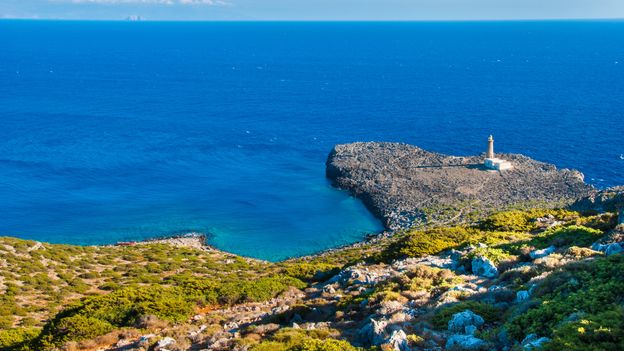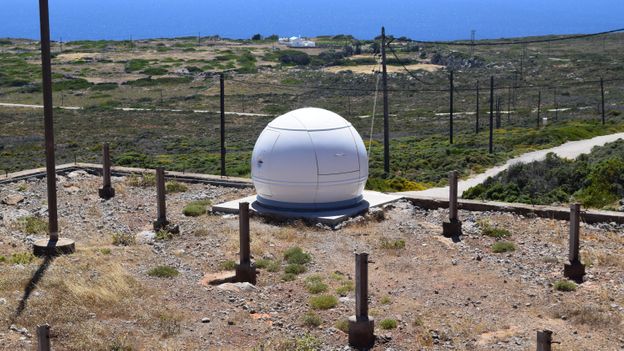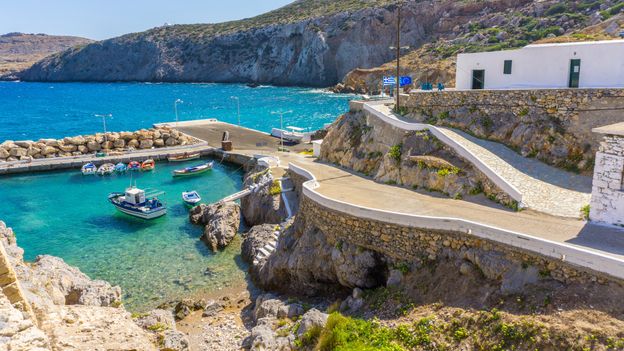Located where three seas converge, Antikythera is a “meteorological melting pot” where you can find dust from the Sahara, tephra from Mount Etna and cinder from Canadian wildfires.
By Stav Dimitropoulos via BBC
From the ship, the island of Antikythera looked like a handful of withered and desiccated boulders flung into the Aegean. “Prepare to get lost in 180-degree blue,” said Maria Tsichla as we approached the harbour at about 04:30 on a June morning. “Oh, and always make sure your room’s door is closed, as the goats here love to enter into houses uninvited.”
Tsichla was travelling to this remote spot for research reasons. She is one of the climate scientists of the Panhellenic Geophysical observatory of Antikythera (Pangea). Named after the ancient supercontinent, the ambitious project, which has been operating since 2017, is inviting scientists from across the globe to this rocky Greek isle to form a global scientific community with the aim of fighting climate change.

As we moored in Potamos, the small circular bay that functions as the island’s port, I could see people crowded together in front of a jumble of white houses. “This is the village of Potamos, where most of the locals live,” said Eleni Marinou, another climate scientist and member of Pangea. “The rest of the island is uninhabited.”
“All these people have come to greet new arrivals at 04:30 in the morning?” I asked her.
“Every ship’s arrival is a mini fiesta here,” she replied.
After all, only 22 people live on Antikythera year-round. But this rural landscape might soon change, with Pangea’s grand plan of turning the island into a worldwide climate superstation

Situated between Crete and Kythera at a point where three seas, the Aegean, the Ionian and the Cretan, converge, Antikythera holds a unique geostrategic position. “Antikythera is located at the crossroads of air masses from all continents,” said Vassilis Amiridis, climate scientist and director of research at the National Observatory of Athens (NOA), who leads the scientific committee of Pangea. This means that large parcels of air from all continents, with the ability to take on the temperature and moisture properties of their respective place of origin, meet exactly above Antikythera, making the island what Amiridis describes as a “meteorological melting pot”. In addition, there is no light pollution, so scientists can observe the skies clearly and easily. Read more from BBC.
Follow News Without Politics for updates on more amazing and relevant unbiased news stories.
Stay informed daily without media bias and ahead of influence.




